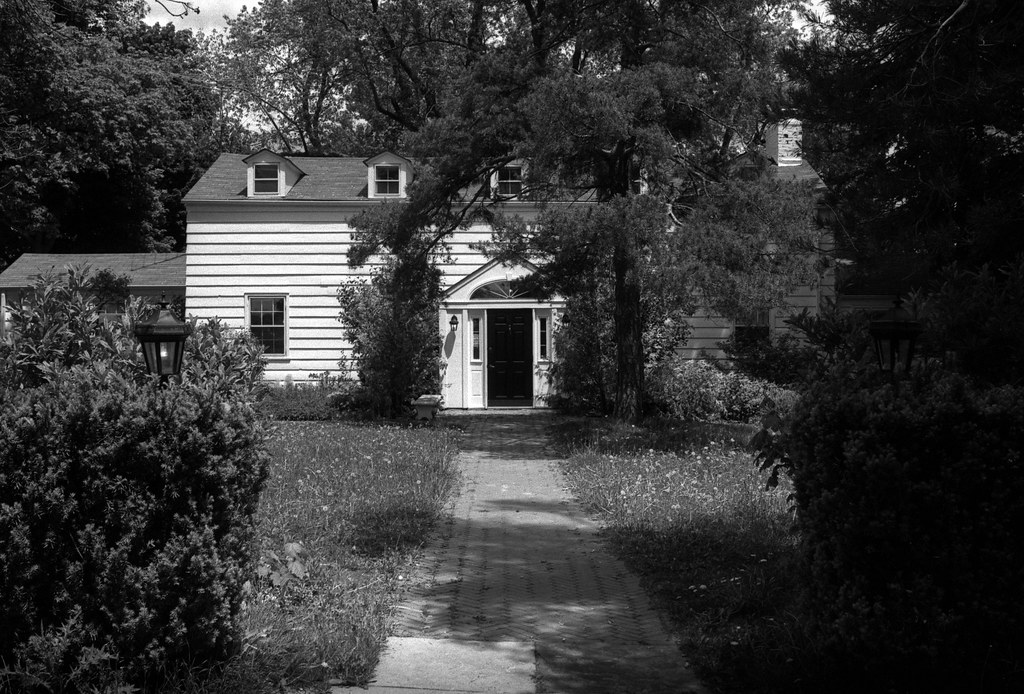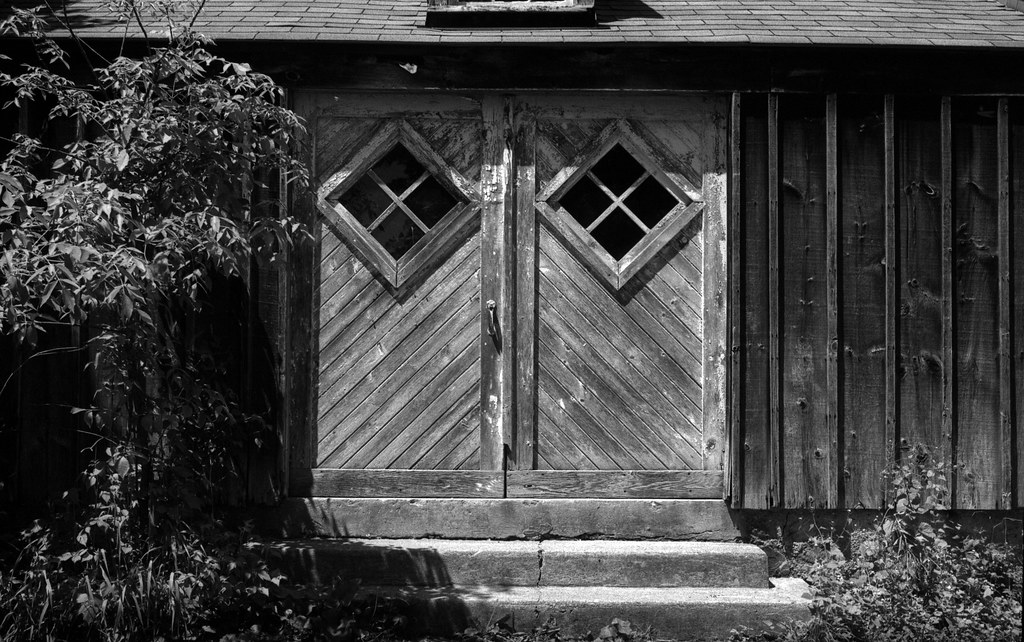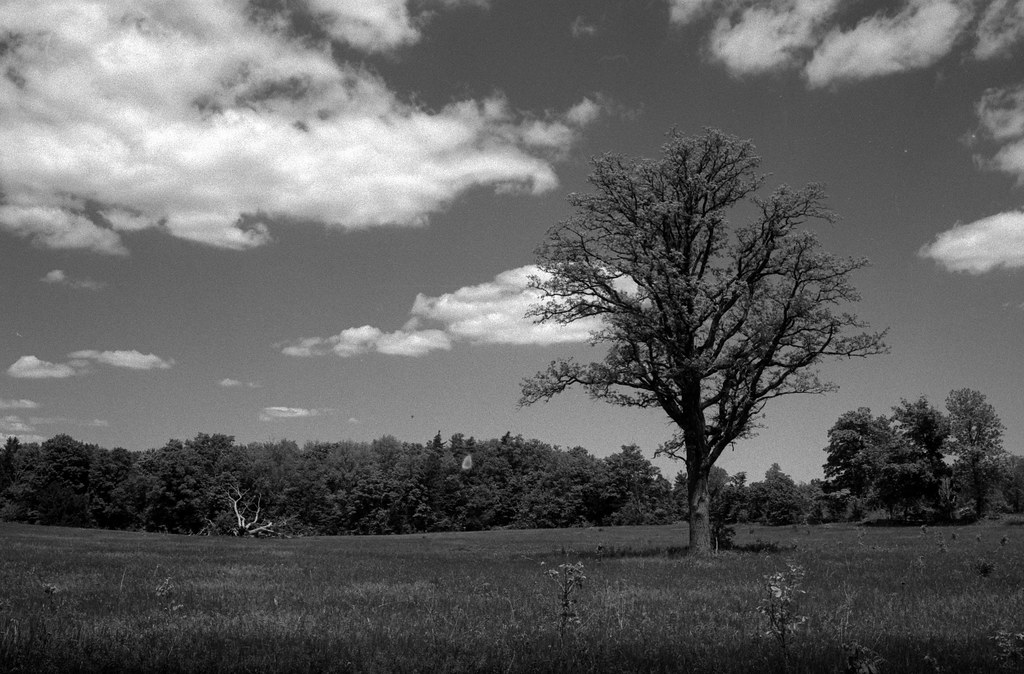Despite the title of this week’s entry in the project, nothing actually has died, but I’ll bet it drew you into the post! This week we’re back in Halton Hills at another historical site. You will remember back earlier in the project; we visited Georgetown, Ontario, a part of Halton Hills, today. This week we’re a bit north of the historic community in another one of those settlements that sprung up, Silvercreek and specifically the historic Scotsdale Farm. I first learned about this place from two good friends, Bill Smith and Andrew Chapman and had a chance to visit under less than ideal conditions at the end of last year. But after being washed out that time around, I made it a point to return under better conditions.

Those of the Neutral Nation first settled the land located along Silver Creek; while nothing remains in the area of those people, they were followed by the Ojibwa and the Mississaugas. While I’m unsure when the area was ceded to British colonists, the first known homestead came in 1836 constructed by Christopher Cook. The Cook family continued to live and work the land; Christopher’s son David and David’s wife Almira expanded the original homestead and began construction of a larger farm focusing mainly on livestock. The farm thrived through the remainder of the 19th Century. While I’m unsure of this, I believe the farm remained the Cook family into the first decades of the 20th Century. The Bennetts, Stewart and Violet, purchased the property in 1938. Together they transformed the simple family farm into a world-renowned horse and cattle farm raising Arabian Horses and Shorthorn cattle. They also took time to preserve the native ecosystem, including a series of wetlands and a section of the main Bruce Trail and a side trail to run through their property. After running the farm for 40 years, the Bennetts bequeathed their farm to the Ontario Heritage Trust in 1982. Today, thanks to the efforts of the Bennetts, Scotsdale Farm remains both a functioning farm, public green space, and event venue.


It’s great to have another week where I ended up with many keepers from the roll, which doesn’t always happen on days with such hard lighting. But thankfully, there were plenty of photographic opportunities. And while I would have loved to share all of them, I can only put seven up per week here on the blog. Starting in the original home, which is a blend of the initial Cook Homestead with David’s expansion and the final American colonial style completed by the Bennetts. However, it was difficult to get the head-on shot because of a group of people seeming to tour the property. The second two focuses on the cattle barn, a shot from behind with the barn almost lost among the overgrowth probably because not many people come around the back, then a detailed shot of the diamond-shaped windows that seemed to be a common architectural element both barns on the farm. Then for a random reason, I found an old claw-foot bathtub, which didn’t seem to serve any purpose, although I’m sure it does, and the second is a section of trail leading off into a pasture. This actually ended up being the trail that I ended up circling to the back on. The final two are from the tail end of the hike as I came out of the wooded sections and crossed several pastures finding an old gate and an old tree in the middle of the field. I went with my gut this week and picked the ones that I felt spark my favourites.


Having brought a couple of other cameras with me on the trip, I decided to keep it simple going with my happy medium of the 35mm f/2.8 and because of the brilliant blue skies that day; I went with a Yellow-12 filter to help knock back that blue light. I thought to over-expose the film by a stop, but I want to develop it next to another film that used the same time and dilution. I left the film at its box speed of ASA-100. Plus shooting landscapes, I wanted to get that lens stopped down consistently to ensure a deep depth of field. While I’ve been using more exotic developers, I went back with an old favourite, Ilford Ilfotec HC; In contrast, most people would go with a more common dilution of 1+31, I find that the dilution doesn’t play nicely with Fomapan 100 and goes with a longer development time in a more dilute developer, my personal standard of 1+63. The results were surreal; the bright, harsh light of the day, combined with the cut in blue light thanks to the yellow filter and the high contrast developer, produced rich images that I have come to like out of Fomapan 100. Certainly happy with this week’s results.


Next week Heather and I are on vacation, and we are going to visit one of our favourite routes to drive, which we share with former British Prime Minister Winston Churchill, the scenic Niagara Parkway.